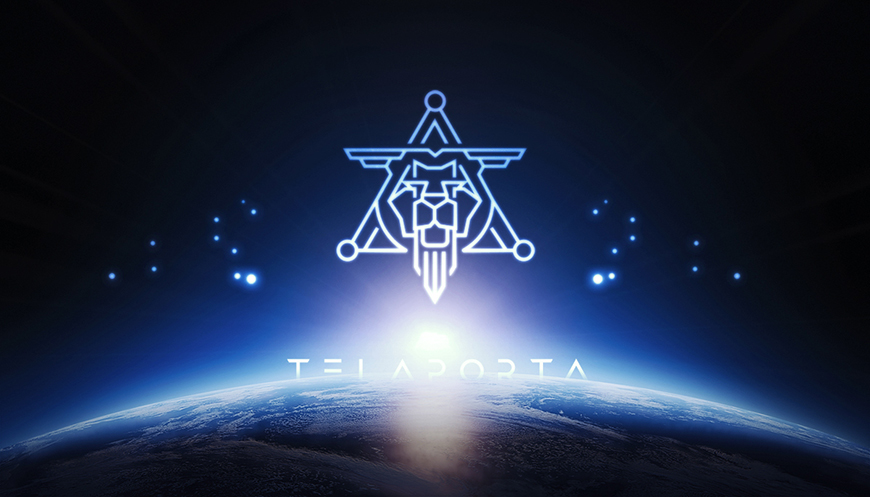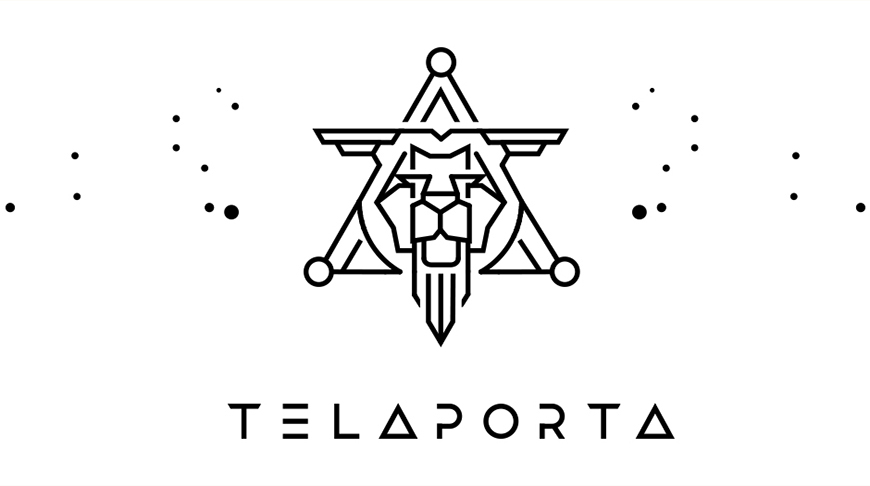
Telaporta is a Los Angeles musician and music producer. We developed this identity following a finely-detailed brief, which said that it must represent the head of a lion and incorporate a series of key features: the letter T for Telaporta, subliminal elements, such as pyramids, stars, and hieroglyphs, and general inspirations from sacred geometry and the iconography of ancient civilizations. It had to convey concepts such as cleanliness, minimalism, timelessness, mysticism and the ancient, while at the same time being futuristic. Much painstaking research and meticulous documentation went into incorporating all these elements into one image. This hieroglyph is the result.

THE HEXAGRAM
It represents the principle ‘as above so below’, among other things. This principle was very important in the egyptian culture: The geometrical similarity between the three mains stars of the Belt of Orion and the pyramids Kufhu, Kafhre and Menkaure were apparent and also the Milky Way seemed to be mirrored by the river Nile on the plateau of Giza. However around 2500 BC the match was not perfect and only by winding back the precessional clock to the year 10.500 BC was the Hermetic principle ‘as above so below’ discovered. The celestial skies as they occurred over Giza around 10.500 BC were perfectly reflected in the layout of the pyramids and the river Nile on the plateau. This theory was first put forward by Robert Bauval in 1983.

THE SEED OF LIFE
The “Seed of Life” is formed from seven circles being placed with sixfold symmetry, forming a pattern of circles and lenses, which act as a basic component of the Flower of Life’s design.
Drunvalo Melchizedek, an author from the New Age movement, has called these figures symbols of sacred geometry, asserting that they represent ancient spiritual beliefs, and that they depict fundamental aspects of space and time. The Temple of Osiris at Abydos, Egypt contains the oldest to date example. it is carved in granite and may possibly represent the Eye of Ra a symbol of the authority of the pharaoh. Other examples can be found in Phoenician, Assyrian, Indian, Asian, Middle Eastern, and medieval art.
Drunvalo Melchizedek, an author from the New Age movement, has called these figures symbols of sacred geometry, asserting that they represent ancient spiritual beliefs, and that they depict fundamental aspects of space and time. The Temple of Osiris at Abydos, Egypt contains the oldest to date example. it is carved in granite and may possibly represent the Eye of Ra a symbol of the authority of the pharaoh. Other examples can be found in Phoenician, Assyrian, Indian, Asian, Middle Eastern, and medieval art.
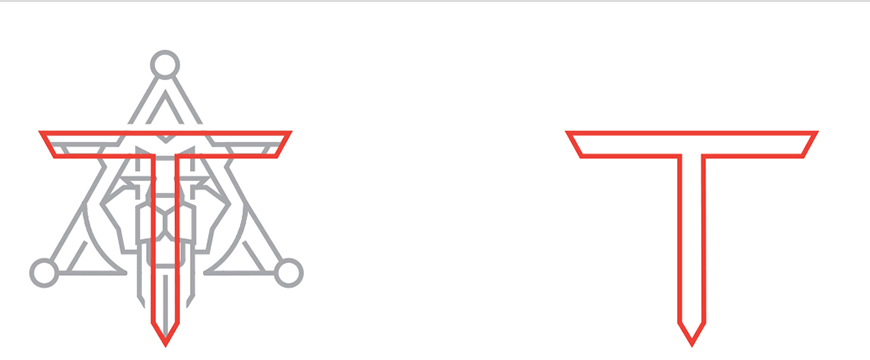
T IS FOR TELAPORTA

THE PYRAMID
The Pyramid is the representation of the Sun, the pyramidion is the uppermost piece or capstone of an Egyptian pyramid in archaeological parlance. They were called benbenet in the Ancient Egyptian language, which associated the pyramid as a whole with the sacred benben stone. In Egypt’s Old Kingdom, pyramidia were generally made of diorite, granite, or fine limestone, which were then covered in gold or electrum; during the Middle Kingdom and through the end of the pyramid-building era, they were built from granite. A pyramidion was “covered in gold leaf to reflect the rays of the sun”

CROP CIRCLES
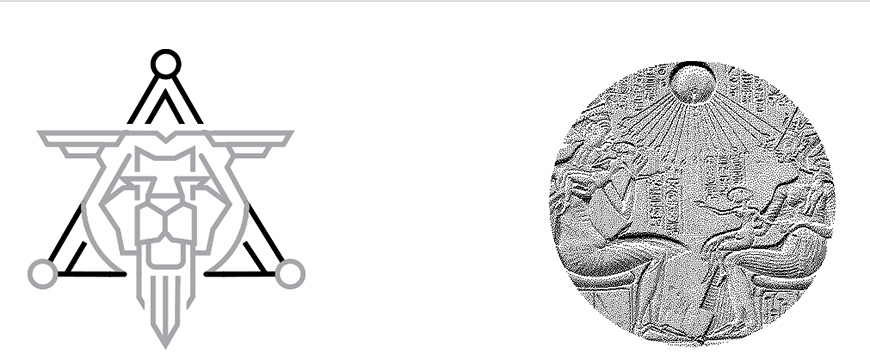
ATEN
Aten is the disk of the sun in ancient Egyptian mythology, and originally an aspect of Ra. The deified Aten is the focus of the monolatristic, henotheistic, or monotheistic religion of Atenism established by Amenhotep IV, who later took the name Akhenaten in worship and recognition of Aten. In his poem “Great Hymn to the Aten”, Akhenaten praises Aten as the creator, and giver of life. The worship of Aten was eradicated by Horemheb.
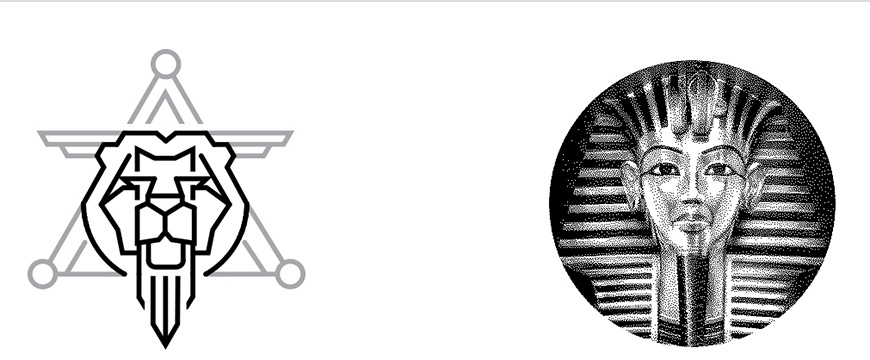
THE PHARAOH
The lion appears represented as a Pharaoh with the ritual beard.
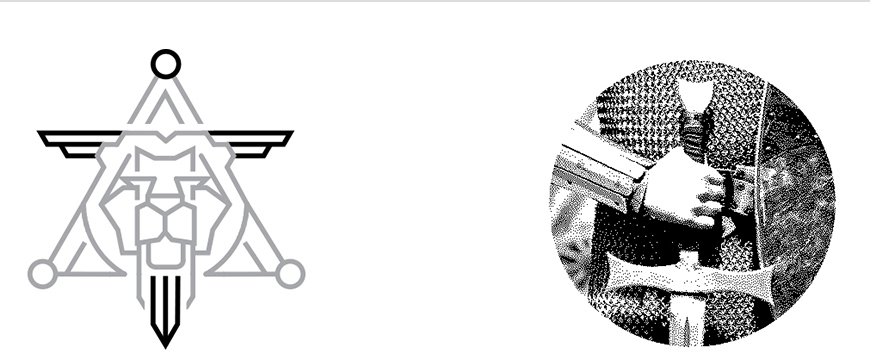
THE SWORD
Symbol of the warrior.
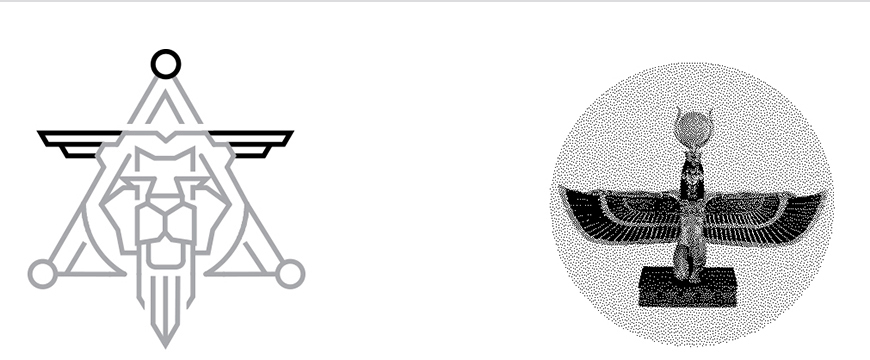
NUT GODESS
Nut is a daughter of Shu and Tefnut. She is Geb’s sister. She has four or five children: Osiris, Set, Isis, Nephthys, and sometimes Horus. Her name is translated to mean ‘sky’ and she is considered one of the oldest deities among the Egyptian pantheon,with her origin being found on the creation story of Heliopolis. She was originally the goddess of the nighttime sky, but eventually became referred to as simply the sky goddess. Sometimes represented as a winged woman.

STARGATE’S EARTH GLYPH
A funny detail, only for nerdy guys

LEO CONSTELLATION AND SOLAR SYSTEM ORBITS
The Great Sphinx is commonly accepted by Egyptologists to represent the likeness of King Khafra (also known by the Hellenised version of his name, Chephren) who is often credited as the builder as well. This would place the time of construction somewhere between 2520 BC and 2494 BC. Because the limited evidence giving provenance to Khafra is ambiguous and circumstantial, the idea of who built the Sphinx, and when, continues to be the subject of debate. An argument put forward by Bauval and Hancock to support the Orion Correlation Theory is that the construction of the Great Sphinx was begun in 10,500 BC; that the Sphinx’s lion-shape is a definitive reference to the constellation of Leo; and that the layout and orientation of the Sphinx, the Giza pyramid complex and the Nile River are an accurate reflection or “map” of the constellations of Leo, Orion (specifically, Orion’s Belt) and the Milky Way, respectively.
A date of 10,500 BC is chosen because they maintain this is the only time in the precession of the equinoxes when the astrological age was Leo and when that constellation rose directly east of the Sphinx at the vernal equinox. They also suggest that in this epoch the angles between the three stars of Orion’s Belt and the horizon were an “exact match” to the angles between the three main Giza pyramids. These propositions and other theories are used to support the overall belief in an advanced and ancient, but now vanished, global progenitor civilization.



